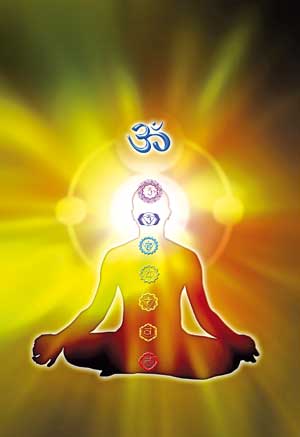 On January 21, 2011 the De Smet – de Marneffe Memorial Annual Lecture was held in the new post graduate block of the Jnana-Deepa Vidyapeeth (JDV) campus. The speaker for that year’s event was Dr. Ramachandra Pradhan of the University of Hyderabad. I was asked by the faculty of JDV to take part in this event as a panelist along with Dr. Pradhan fielding questions after the lecture from those in attendance. The title of his lecture was “The Contributions of Western Philosophy to the World Cultures and the Future of Philosophy.” However, I noted that most students in attendance were concerned about the exact opposite. Is there something about religiously pluralistic India that can contribute to the world’s future in ways “Western philosophy” that is often presented monolithically cannot? That is the question we were left with last week and now examine more closely.
On January 21, 2011 the De Smet – de Marneffe Memorial Annual Lecture was held in the new post graduate block of the Jnana-Deepa Vidyapeeth (JDV) campus. The speaker for that year’s event was Dr. Ramachandra Pradhan of the University of Hyderabad. I was asked by the faculty of JDV to take part in this event as a panelist along with Dr. Pradhan fielding questions after the lecture from those in attendance. The title of his lecture was “The Contributions of Western Philosophy to the World Cultures and the Future of Philosophy.” However, I noted that most students in attendance were concerned about the exact opposite. Is there something about religiously pluralistic India that can contribute to the world’s future in ways “Western philosophy” that is often presented monolithically cannot? That is the question we were left with last week and now examine more closely.
During this conference the solidarity sought with one’s religious neighbors was often expressed in terms of practical and political concerns. A brief summary of a lengthy discussion during the panel session will serve as a good example of what this means. There is genuine worry that if religions are not up-to-date with modern knowledge, they will not be capable of meeting the needs of modern people. Technology has become very integrated into daily life and many people let their smart phones do all their thinking. Deep thought is being lost. Technology has also not yet alleviated the massive poverty found in India. When people are no longer satisfied with technology as the solution to life’s problems, will religion have made the creative advance needed to be relevant? The potential solution focused on during this conversation was not that becoming up-to-date meant comparing religious claims with those in biological science, for example, but that it meant becoming pluralistic.
 Augustine Pamplany has argued that the epistemology of Indian science gives it ontological proximity to religion and gives warrant to such spiritual holism. The dialogue between science and religion is part of the broader context of the manifestation of truth. The universe is the macrocosm in which humans are microcosms. And taken one step further from a spiritual perspective, both are part of the larger divine macrocosm. Before explaining this further, it should be contrasted with two opposing ways of relating God and world.
Augustine Pamplany has argued that the epistemology of Indian science gives it ontological proximity to religion and gives warrant to such spiritual holism. The dialogue between science and religion is part of the broader context of the manifestation of truth. The universe is the macrocosm in which humans are microcosms. And taken one step further from a spiritual perspective, both are part of the larger divine macrocosm. Before explaining this further, it should be contrasted with two opposing ways of relating God and world.
The mindset that penetrates through the seen to the unseen merges what is cosmological and divine into the monism of pantheism. Conversely, overly rational emphasis on analysis over synthesis has led, especially in the Western philosophical tradition, to dualism and the separation of God and world. The former approach appreciates a depth to reality but remains largely ignorant about the physical details of that reality. The latter tends to view reality as inert and passive, creating profoundly confused creatures who don’t know how to live in the world.
Pamplany’s approach is dialectical. God’s mystery can be explored by probing the mystery of the physical world and vice versa. Advaitic epistemology has advanced a way of knowing that is methodologically pluralistic by beginning and ending in experience. Disciplines like science, art, poetry, and religion are not to be separated because they are all means of gaining knowledge from experience. All disciplines have the same goal and method, to know truth.
So in India, experience dictates epistemology rather than epistemology dictating what can possibly be experienced. The conceptual clarity and theoretical sophistication of Western science are not enough for science and religion to effectively dialogue. Western science is viewed as being overly rationalistic, thereby fracturing a unified approach to truth. Hermeneutically appropriating the spiritual vision behind Indian science brings praxis back into the picture. As Pamplany says, “on the one hand, the logic of integration dominant in the Hindu approach towards reality necessarily entails an ontologically complimentary vision of science and religion, and on the other hand, the emerging epistemological context generated by the compelling scientific knowledge and its methodic and linguistic commonalities with the religious epistemological structures render their intersection inseparable” (Together Towards Tomorrow, 392).
 Besides being spiritually evocative of religious harmonization, this makes some biological sense. Larger cooperative groups have advantages over smaller isolated tribes. Pluralistic responses to technological problems made possible by our advanced biology are actually more thorough according to the logic of evolution than responses anchored in one religious tradition and ignorant of other possibilities.
Besides being spiritually evocative of religious harmonization, this makes some biological sense. Larger cooperative groups have advantages over smaller isolated tribes. Pluralistic responses to technological problems made possible by our advanced biology are actually more thorough according to the logic of evolution than responses anchored in one religious tradition and ignorant of other possibilities.
As we improve our information processing ability with our technology, it takes a more concerted effort to remain responsible for long term goals. Atoms form molecules that form cells which allow for organized molecules that make organisms with specialized tasks possible which, in turn, allows for social systems with divisions of labor. Rather than just continuing this movement with reckless abandon, religions have the tendency to look ahead with visions. The sometimes accidental advances in technology can be directed toward goals in which humans are more in balance with one another and the earth. There was a sense among my students and at this conference that cooperating with other religions will help engender those goals while religious competition will be disastrous. Just as evolution has led to people with the ability to use tools and modify their environments, now in drastic ways due to modern science and technology, religions will also modify their environments. And it is hard to argue with the notion that a pluralistic position advocating cooperation will modify the world for the better when compared with religious exclusivism. We are at a point where we will get nowhere unless we can shed some old religious trappings and work together.
 A stereotype concerning this holistic spirituality needs to be avoided, however. Indians are not aloof mystics without any concern for the world. Sophisticated work has been done on the Indian contributions to modern science and technology, especially astronomy and communication technology. Consider this statement from the Vedang Jyotish (1000 B.C.): “Just as the feathers on the peacock and the jewel-stone of a snake are placed at the highest point of the body (at the forehead), similarly, the position of Ganit (mathematics) is the highest among all branches of the Vedas and the Sastras.” Furthermore, the development of science in India was also pluralistic. Belief among Jains and Buddhists in limitless space and time helped develop work on infinite numbers as well as set theory. Another stereotype accompanies this one, that Asia is traditional and the West progressive. India has been very progressive, especially in the technological realm. But, I would argue, it has been even more progressive that the West in its pluralistic religious response to science and technology. After working through these issues in India, it looks downright ridiculous to read books on science and religion in which Christianity is treated as the only possible dialogue partner with science. But there does seem to be a paradox in India’s pluralism.
A stereotype concerning this holistic spirituality needs to be avoided, however. Indians are not aloof mystics without any concern for the world. Sophisticated work has been done on the Indian contributions to modern science and technology, especially astronomy and communication technology. Consider this statement from the Vedang Jyotish (1000 B.C.): “Just as the feathers on the peacock and the jewel-stone of a snake are placed at the highest point of the body (at the forehead), similarly, the position of Ganit (mathematics) is the highest among all branches of the Vedas and the Sastras.” Furthermore, the development of science in India was also pluralistic. Belief among Jains and Buddhists in limitless space and time helped develop work on infinite numbers as well as set theory. Another stereotype accompanies this one, that Asia is traditional and the West progressive. India has been very progressive, especially in the technological realm. But, I would argue, it has been even more progressive that the West in its pluralistic religious response to science and technology. After working through these issues in India, it looks downright ridiculous to read books on science and religion in which Christianity is treated as the only possible dialogue partner with science. But there does seem to be a paradox in India’s pluralism.
This pluralistic acceptance of difference is grounded something like a holistic monism. They are all means of experiencing what cannot be experienced and touching what cannot be touched by normal means. Differences are complimentary when in a larger totality. I simply wonder if a kind of philosophical and religious reductionism is present in this reaction to scientific reductionism. Scientists reduce complex organisms to their simpler parts when offering explanations. But isn’t reducing physical experience to a spiritual manifestation a similar move? If there is a problem with scientific reductionism, there should also be a problem with spiritual reductionism. I remain unconvinced that everything is so obviously a manifestation of the divine. What of all our mistakes and errors, including our biological knowledge of why people might come up with superstitious religious ideas? Pamplany’s dialectic needs to be pushed further into a possible critique of its resulting holism.
Consciousness has become a central issue in this discussion. It is not the creeds of religion that matter as much as the experiences engendered by adhering to a set of creeds. But can consciousness be reduced to matter? If not, can divine consciousness support the world and its many religions? Is it the point of contact with this spiritual holism? Behind the many different religions, is one’s spirit the point of contact with the divine consciousness? What if our mental ideas are mistaken? Next week we dig deeper into the theological tradition in India that has wrestled with such issues and the new problems it has created.
P.S. The photos in this month’s series are from my trip to India.












